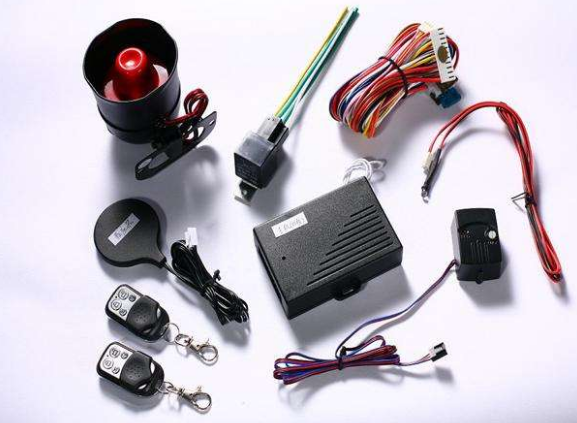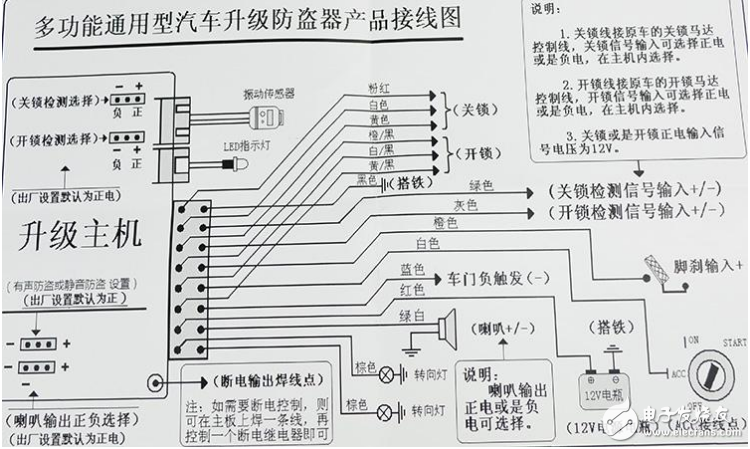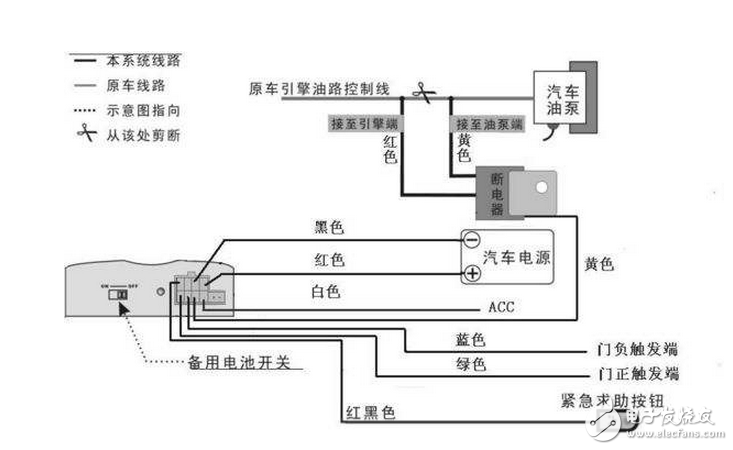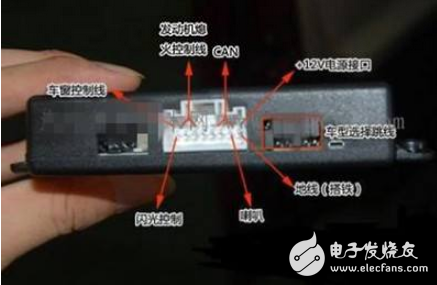Explain the installation method of car anti-theft device in detail
When it comes to car anti-theft devices, friends who love cars and those who own cars know it. The car anti-theft device covers GSM network digital mobile communication technology and GPS satellite positioning technology, and is a high-tech security anti-theft product. The use of mobile communication network completely solves the distance limitation and easy-to-crack problems that ordinary anti-theft devices cannot solve. On the basis of ordinary anti-theft device functions, it also has functions such as mobile phone control, remote monitoring, and remote alarm. Make adequate protection for your car to prevent theft. Although the function is so powerful, it has to be installed. The following is a detailed explanation of the installation of the car anti-theft device.

Confirm that all parts in the car anti-theft device are complete, such as the complete machine, battery, certificate, and manual.
1. Before installation, connect all the wires and check that the wires are correct, and then plug the power supply, vibrator, and LED lights to the host. The location of the host and the vibration sensor should avoid places with high magnetic fields such as audio speakers. Before installation, it is necessary to confirm whether the original car has a central control lock, and if so, determine which type of triggering it is. When installing the anti-theft device, you can follow the "central control lock wiring diagram" in the "installation circuit diagram" for wiring. Note: If the judgment is uncertain, connect according to the positive and negative triggers in the "Central Lock Wiring Diagram" to ensure the normal operation of the central lock. If not, you need to install a central control lock.
2. Determine the installation location. Remove the decorative panel at the lower end of the instrument panel, and determine the installation location of the system host, anti-cover host, antenna, microphone and other components in the car (must meet the distance requirements in the installation supplement)
Pay attention to dust and water. Lay a good foundation for distribution wiring.
3. Check lines, wiring, and line layout Check lines: go straight out of the wiring distribution lines that need to be connected in the installation circuit diagram: when distributing the lines, the wires should be as concealed and beautiful as possible, and the distance between the contact and the host should be reserved a little longer.
Wiring: Whenever a circuit is tested, connect one under the premise of ensuring that there is no error to avoid wrong connection. Wiring requirements: tightly connected joints, avoid virtual connections, and wrap them with insulating tape. This process is the most important step in the entire installation process.
If the connection is wrong, the anti-theft device cannot be used in the slightest, and the components in the car will be burnt in the worst, so that the vehicle cannot be used normally, or even cause a fire.

4. To connect the anti-theft device in a straight line, you need to find the following lines in the car: positive power, ACC, lock ON line, +12V line, turn signal line, foot brake switch line, door contact switch line, Polar line, central control lock signal line.

Positive power: Pull out the key, ground one end of the electric pen, and test the other end on the lock lead. The electric pen indicator light is always on, it is positive.
ACC line: hit the lock key to ACC, test with an electric pen on the lock lead, the electric pen will light up when the key switch is turned to the ACC position, and the electric pen will also light up when the motor is turned on. The electric pen light will go out (no electricity) when the motor is started. This line is the ACC line.
Lock ON line: Turn the lock key to the ON position and test with an electric pen on the lock lead. When the key is turned ON, the electric tester has electricity, and the electric tester will also light up (electricity) when the motor is started. This line is the ON line.
+12V line: the battery positive line (normally fired line), when the key switch is OFF or in any state, this line has a positive charge is the +12V power line.
Turn signal line: the key must be turned ON, and then use an electric pen to search on the wiring harness under the turn signal switch (a few models need to be searched near the fuse box), if the electric pen indicator light turns on and off with the turn signal on and off, This line is the turn signal wire, similarly find another turn signal wire.
Foot brake switch line: This line can generally be found at the contact switch above the foot brake. One is always positive and the other is being stepped on. The line that has power after the foot brake is the foot brake switch line
Door contact switch line: Open the door of the driving position and close other doors. The end of the electric pen clip is connected to the positive electricity in the car, and the other end is for testing the wiring harness of the door switch. Press the touch point on the side of the door with your hand to open and close. With the opening and closing of the door contacts, the indicator light of the electric pen and the lights in the car turn on and off. This line is the door contact line.
Polar line: the ground wire; the car body is connected to the negative electrode of the battery, and the metal part of the car body is connected to the ground.
Central control lock signal line: One end of the electric pen is grounded, and the other end is tested on the wiring in the wiring harness (the wiring harness is usually near the door of the driving position). The four-door lock is opened and closed according to the instructions of the electric pen. That is the signal line.

There is a relay in the car anti-theft device, which is connected to the normally closed contact, which can control the external circuit. In fact, it is a switch controlled by the anti-theft device. You can disconnect the start line or the "ON" line according to your needs, or you can disconnect it. The oil circuit is to find the above line, disconnect the line, and then connect the "switch" of the anti-theft device in series in the line, so as to achieve the purpose of being controlled by the anti-theft device. For example, if you connect the start line to control it, it will act as an anti-theft device. When you don’t call the police, the line remains connected and you can start the car normally. When you illegally enter and start the car forcibly, the anti-theft device will activate the protection and disconnect the switch, so you can’t start the car (because the start line is disconnected, the car will not start ), in the same way, if you disconnect the "ON" line, then you can't start the car (because the "ON" line is disconnected, the car only starts the motor and won't start). There is also a case where the oil circuit is disconnected. , The phenomenon is the same as disconnecting the “ON†line. Because the oil circuit is disconnected, the car is not supplied with fuel and naturally cannot start.
Type1 To Type2 EV Charging Cable
Type1 To Type2 Ev Charging Cable,Type 1 To Type 2 Charging Cable,Type 1 And Type 2 Ev Charging,Type 1 To Type 2 Cable
Yangzhou JERI New Energy Co., Ltd. , https://www.jrevcharging.com